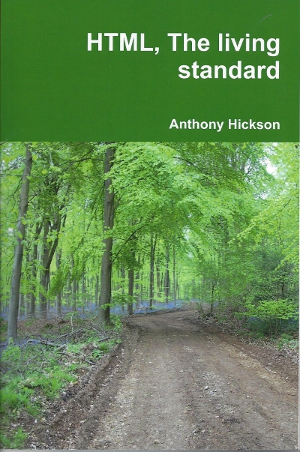Introduction
This work attempts to explain how to create a web page using HTML, the living standard.
Web pages consist of two parts: the data (known as the markup) and the presentation (known as the style). These should be kept quite distinct because should you wish to change (a) something in the data it is difficult to find it if the styles (presentation) are mixed up with the data and (b) by having a separate file for the styles it is easy to change the presentation for the whole page (or even the whole site) very quickly.
So you need two files, one for the data whose file name should finish in .html which stands for HyperTest Markup Language and another for the styles whose file name should finish in .css which stands for Cascading Style Sheets. I am not going to describe the latter but a good book that I can recommend and use is Cascading Style Sheets: Designing for the Web by Håkon Wium Lee and Bert Bos.
Examples:
- if styles are used throughout and within the html markup it is significantly more difficult to change than if this is in a CSS file. The latter involves changing only one line. the former very many lines.
- all the text on your web page could be changed from black to red by adding one line only to your CSS file.
However some elements that were previously presentational have been redefined to be
media independent Media Independent. e.g. Computers, TV sets,
tty (especially for deaf people),
telephones, aural (speech) & braille based devices. Style sheets, on the other hand can be media dependent,
one for screen and another for printing but not much use for speech,
for example:
<b>,
<i>,
<hr>,
<s>,
<small>.
One other comment: Always keep your web pages up-to-date, web pages with broken links or out-of-date information will detract the people you are trying to attract and probably drop you down the ratings for the search engines.

